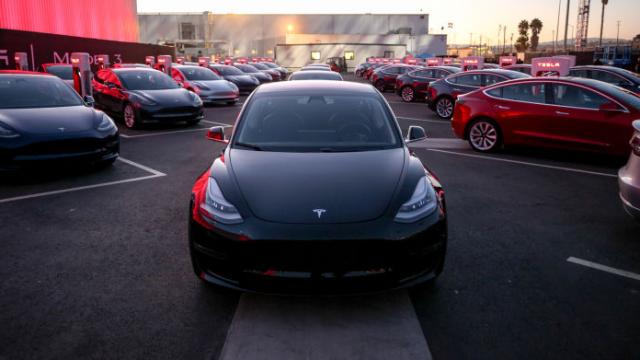Tesla last week that it made “major progress” addressing bottlenecks in the Model 3 production line and told investors it made roughly 2,500 of the all-electric cars in the last quarter of 2017. But the automaker again pushed back a production target of 5,000 units per week deeper into 2018.
Tesla had been under enormous pressure to address issues in the Model 3 line, after having missed its initial target of 1,500 units in the third quarter by 80 per cent. But the company said in a letter to investors on Tuesday that it made progress addressing the issues and increased the production rate “significantly” toward the end of the quarter.
Tesla reported making 2,425 Model 3s over the fourth quarter. In the last seven days of the quarter Tesla said, it made 793 Model 3s; since Dec. 9th alone, it matched the total of the first four months of production for the all-electric. The company said it delivered 1,550 Model 3s, up from about 220 in the previous quarter. Due to the uptick toward the end of the quarter, the company said it wasn’t “able to deliver many of these cars during the holiday season, just before the quarter ended.”
But this might not allay concerns of investors who’re wondering if Tesla can deliver on paring down the daunting list of 450,000 reservations for the Model 3 in a timely fashion. Musk had suggested on a conference call in November that Tesla would hit hit “something like a few thousand [Model 3s] per week at the end of Q4.” And the company again pushed back a goal of making 5,000 Model 3s per week from the end of the first quarter in 2018 to the end of the second quarter.
“As we continue to focus on quality and efficiency rather than simply pushing for the highest possible volume in the shortest period of time, we expect to have a slightly more gradual ramp through Q1, likely ending the quarter at a weekly rate of about 2,500 Model 3 vehicles,” Tesla said. “We intend to achieve the 5,000 per week milestone by the end of Q2.”
The company previously said it expected to hit a target of 10,000 per week at some point in 2018, but that requires a “capacity addition” at Tesla’s Fremont, California, factory that won’t be installed until the 5,000 per week run rate is hit. The letter on Wednesday didn’t provide additional insight on when the capacity addition will be installed.
As Tesla always reiterates, the company’s delivery count – 29,870 vehicles in total – varies from the production count, “as we only count a car as delivered if it is transferred to the customer and all paperwork is correct.”
In total, the company delivered 29,870 vehicles, including roughly 15,000 Model S sedans and about 13,000 Model X vehicles, ending Tesla’s 2017 with more than 101 thousand deliveries, an increase of 33 per cent from 2016.
Analysts expected a higher delivery rate for the Model 3; as such, Tesla’s shares took a hit following the release of the delivery totals. The automaker has a jam-packed 2018: an all-electric semi truck, which has already netted hundreds of reservations, is supposed to go into production in 2019 around the same time a new crossover — the Model Y – is planned. By 2020, Tesla also hopes to have a new all-electric Roadster in production.
We will update this post when more information becomes available.
